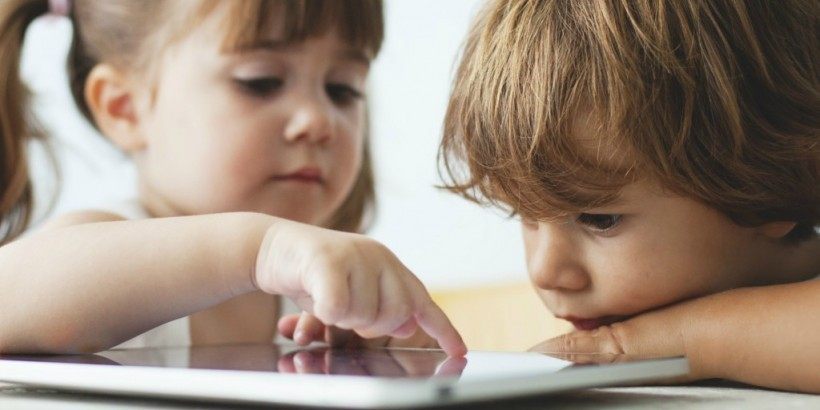The Impact Of Learning Apps On Children's Education
The world is witnessing a revolution in digital technology in every sector. A critical aspect of technological evolution is the rise of EdTech. The newest generation is growing up with technology and the Internet as an integral part of their lives. On one hand, this allows parents to offer unique learning experiences to their children. On the other hand, it may lead to excessive screen time and an over-exposure that is detrimental to learning. Then perhaps the most pertinent question facing parents and educators today is: Should we use more or less digital aids in education?
Learning apps, eLearning platforms, and digital aids quicken the learning process and make it more efficient. Often, it is easier for children to understand confusing concepts through interactive online applications. However, it is essential to understand different learning methodologies and the building blocks of education before we decide to use learning apps. This article explores the pros and cons of using learning apps and technological solutions for children's education.
Understanding Learning Methodologies For Children
Every child has a unique approach to learning. Some children learn quickly, while others may need more time. Children absorb information through visual, auditory, and sensory stimulations. Modern educators are focused on finding new approaches that refocus educational efforts on the learners rather than the teachers. Using technology enables educators to allow children to learn at their own pace. It encourages self-learning and gives learners autonomy over their schooling. Learning apps are especially beneficial for children with dyslexia and autism to develop social skills in a safe environment.
What Exactly Is eLearning?
eLearning is an acronym for "electronic learning." The term encompasses all aspects of technology, the Internet, and electronic devices created to aid learning. Today, eLearning is synonymous with education. In the context of smart class education, eLearning has become synonymous with modern education. One of the most popular forms of eLearning today is mobile applications. Mobile apps allow kids to learn wherever they are, at their own pace, and usually in an entertaining manner.
The Benefits Of Learning Apps For Children
1. Motivation And Engagement
It is challenging to keep young children focused and engaged in the learning process with traditional learning methods. However, using a digital aid makes it easy to get children excited about learning. They are motivated to participate in the learning process and look forward to an opportunity to use the application again.
2. Self-Learning/Individualized Learning
A significant difference between traditional learning methods and EdTech is the possibility to personalize the learning experience. Studying independently enables students to learn at their own pace rather than keep up with the instructor.
3. Accommodating Those With Learning Difficulties Or Disabilities
Children with learning difficulties or disabilities can choose a more comfortable learning pace with the help of technology. They no longer need to feel pressured to learn at the same speed as their peers. For example, dyslexic children can use specialized mobile applications to learn reading.
4. Future-Proofing Learning Aids
Today, computers, laptops, and smartphones are integral to every profession. Irrespective of their future career paths, all children should learn to use technology as a life skill. Teaching aids that offer children a chance to use the Internet or work with new software can help prepare them for the future.
5. Assistive Tools For Teachers
Teachers now have access to many tools that can help them enhance their pedagogy. Using audio-visual aids can make the learning process more exciting and fun. Besides, analytical tools can help them gauge students' responses to different learning methods and choose the most suitable approach for their class.
6. Round-The-Clock Availability
In traditional learning, students lose the opportunity to learn if they miss a class. However, with technology, we can make more learning resources available to children to ensure they can access online classes whenever needed.
The Drawbacks Of Learning Apps For Children
1. Distraction
The Internet is full of new and exciting things to learn. It also offers unlimited avenues for entertainment that are distracting for young minds. Children may be unable to overcome the temptation to explore the Internet for fun when they should be studying. Students may choose to play games or watch videos instead of studying online.
2. Attention And Emotional Development
Learning in a traditional setting enables children to expand their attention span and develop self-control. Learning through technology does not allow children to develop empathy for others, the ability to manage distressing emotions, and longer attention spans.
3. Overstimulation Due To Excessive Screen Time
Research has proven that excessive screen time can cause stress, mood swings, and sleep disruptions in children. Too much screen time is overstimulating and interferes with a child's emotional functioning.
4. Decreased Social Interaction
When children learn in a school, they also interact with other kids their age and develop essential social skills. Educational applications are designed for individual use and discourage social interaction. It may lead to delayed social-emotional development in young children.
5. Many Teachers Are Unfamiliar With Educational Technology
Most teachers in education systems worldwide have learned to teach with traditional methods. They are unfamiliar with the learning tools and their advantages in modern times. Children's education may suffer if teachers do not have a good command over using technology.
Finding The Right Balance Of Tradition And Technology
After perusing the pros and cons of using learning apps in children's education, we can safely say that the answer lies in finding the right balance between traditional learning methods and technology. The onus of helping children appreciate both styles of education lies on parents and educators. Based on the subject of study, the needs of the learners, and the available resources, parents and educators must create the right mix of technological and non-technological learning resources for children. It will help children to learn better while developing social-emotional skills appropriate for their age.










